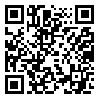Volume 8, Issue 31 (2-2015)
etiadpajohi 2015, 8(31): 35-44 |
Back to browse issues page
Abstract: (8909 Views)
Objective: This study was an attempt to compare impulsive decision-making between AIDS sufferers, people suffering substance abuse, and nonclinical populations. Method: This was a causal-comparative study which was conducted within the six months of 2011. In this study, 30 AIDS sufferers, 30 drug abusers, and 30 healthy subjects from nonclinical population in the 15-67 age range were selected through convenience sampling. The selected participants were matched in terms of age, education, and gender. Barratt Impulsiveness Scale (1997) were administered to the three groups. Results: The results showed that there was a significant difference among the three groups in impulsivity subscales. Conclusion: The results showed that there existed some degree of deficiency in decision-making processes in AIDS sufferers and drug dependent persons. It may be rooted in a number of personality traits neurological damage drug use the insufficiency of appropriate training in life skills, problem-solving, and decision-making the availability of emotions at paly and personal and cultural thoughts and beliefs around protective behaviors in sexual relationships.
Type of Study: Research |
Subject:
Special
Received: 2015/01/27 | Accepted: 2015/01/27 | Published: 2015/01/27
Received: 2015/01/27 | Accepted: 2015/01/27 | Published: 2015/01/27
| Rights and permissions | |
 |
This work is licensed under a Creative Commons Attribution-NonCommercial 4.0 International License. |


